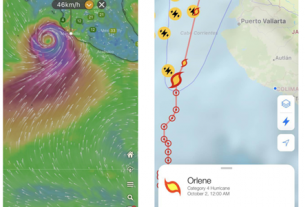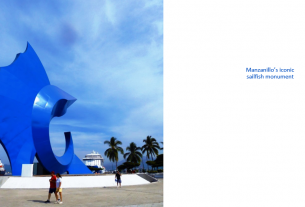By Dan and Lisa Goy and Paul Beddows on the Winter 2022/2023 Edition
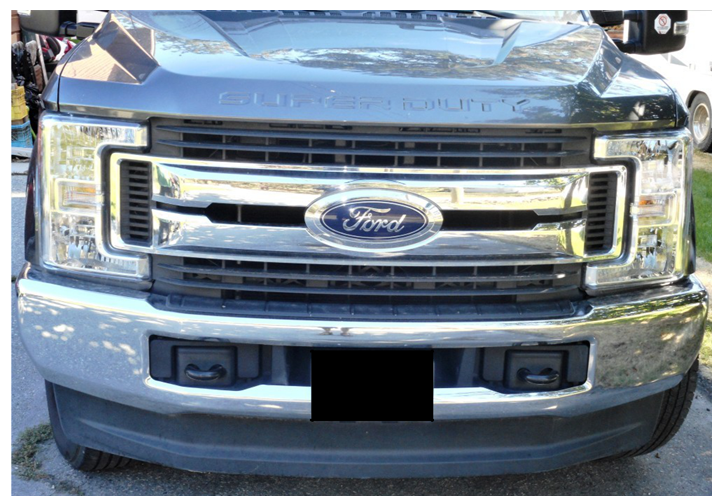 Details, Details, Details and more Details!
Details, Details, Details and more Details!
Driving your vehicle into Mexico is not like a road trip to the US or Canada. For Canadians or Americans, all that is required is a passport and a driver’s license. It is also helpful to have a destination in mind.
Driving into Mexico is a very different story. First and foremost, you need to purchase Mexican Vehicle Insurance. It is always best to do that before you cross the border, online or by phone is easy. It can be for 1 day or 1 year or anywhere in-between.
Baja California, Baja California Sur, Northern Sonora
Other than your Tourist Permit, no additional permits are required in Baja or northern Sonora, specifically limited to San Carlos and Guaymas southbound. However, it is always important to have your vehicle(s) registration with you. Routinely, when you cross the border into Mexico, you will be asked for these.
Everywhere else in Mexico
Every vehicle registered outside of Mexico must obtain a “Temporary Import Permit”, commonly referred to as a TIP. There are no exceptions and driving a vehicle in Mexico with-out a TIP can result in confiscation of the vehicle(s) and depor-tation of the owner.
Who is eligible for a TIP?
• A Tourist
• A Canadian or American with Mexican Temporary Residence
*You are not eligible for a TIP, as a Canadian or American, if you have Mexican Permanent Residence status
**A Mexico Permanent Resident or a Mexican citizen can drive the RV in Mexico if the owner is in the vehicle or they are on the registration and an immediate relative.
Basic TIP Details
• Cars, motorcycles, vans, SUVs and pickup trucks (personal vehicles) require a refundable deposit (usually $400 USD) which is best paid by a credit card.
• The TIP is 180 days in length from the time of application and the cost is $65 USD.
• The vehicle must be registered in the name of the applicant.
• In the event a lien is visible on the registration, you will require a letter of permission from the lien holder.
• This is also required if the vehicle is in a company or corporate name, even if the owner is the applicant.
• Our recommendation is to make the application in person, not online.
• You can obtain permits online, however there are no guarantees. We recently knew of an individual who secured their TIP online then was forced to purchase another TIP in person.
• Window stickers are now a thing of the past. You are issued a printout that you need to carry in an accessible place as you may likely be stopped and asked to produce it.
• When you get a permit, double check to ensure the VIN is correct, before you leave the Banjercito office, or you will be unable to cancel it on exit and may not be able to get an-other the following year or if you change vehicles.
• It is a good idea to take a photograph of all the documents and ensure the photos back up to the cloud.
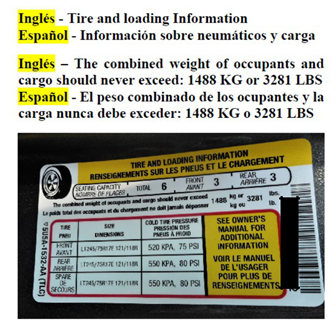 TIPs for RVs – Time to pay attention!
TIPs for RVs – Time to pay attention!
• 5th wheel trailers, travel trailers, tent trailers and motor homes (classes A, B, C) require a 10-year permit at a cost of $65 USD (no deposit required).
• Motor homes with towed cars require a 180-day permit (including deposit and permit fee).
• Those importing an A, B or C motor home should always check to see that the name “motor home” is on the registration.
• Truck campers are often treated as cargo and can be included with the vehicle TIP.
• Separate permits for each will be required if the camper is separately licensed from the truck
• A cargo trailer may be added.
• ATVs under 350cc or motorcycles under 250cc can be added to your primary permit.
• A couple can hold one 10-year and one 180-day permit. The vehicle has to be registered or co-registered in their name.
Pickup trucks – “capacidad de carga” vs “cargo capacity” vs “GVWR”
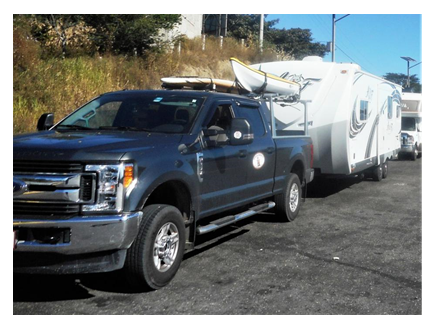 Snowbirds that pull trailers regularly do so with pickup trucks. They can be ½-ton, ¾-ton or 1-ton trucks, sometime with duals. The same goes for pickup trucks with campers. In the not too distant past, obtaining a TIP for these pickup trucks was routine for tourists.
Snowbirds that pull trailers regularly do so with pickup trucks. They can be ½-ton, ¾-ton or 1-ton trucks, sometime with duals. The same goes for pickup trucks with campers. In the not too distant past, obtaining a TIP for these pickup trucks was routine for tourists.
For some time, regulation has stated trucks with greater than 3500 kg cargo capacity (7710 lbs) could not obtain a TIP. Clearly all of the pickup trucks described above have a cargo capacity have far less than 3500 kg or 7710 lbs. In fact, a 1-ton truck with duals’ maximum payload capacity is less than 5000 lbs. The regulation was always designed to keep large commercial trucks from being imported into Mexico.
That all started to change a few years ago, starting on the eastern US/Mexican border in Texas and, over the years, has been migrating westward. At first, we believed that a few officials on the eastern Texas border with Tamaulipas were simply misinterpreting the regulation and did not understand “capacidad de carga” interpreted into English means “cargo capacity”, not GVWR (Gross Vehicle Weight Rating). GVWR is defined as the maximum load (cargo capacity), plus weight of the truck, including the passengers. As an example, Dan has a 2017 FORD F250 with a listed GVWR of 4491 kg and a cargo capacity of 1488 kg or 3281 lbs. This is well below the 3500 kg maximum limit as stated in the Banjercito regulation.
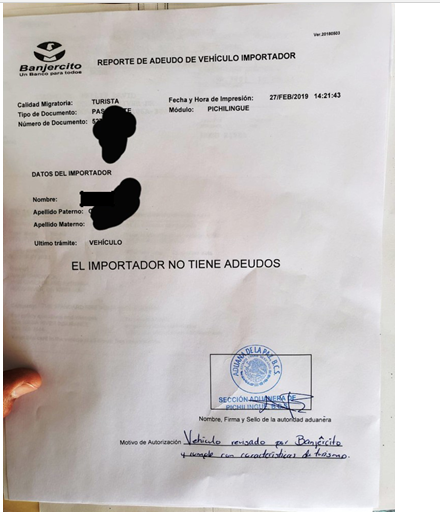 Unfortunately, officials across the Texas and New Mexico borders with Tamaulipas, Nuevo Leon, Coahuila and Chihuahua are regularly interpreting “capacidad de carga” as GVWR and routinely refuse TIPs to pickup trucks listing the GVWR over 3500 kg or 7710 lbs, which is a ¾-ton truck and up. This interpretation has been creeping more and more into Sonora across from Arizona. We routinely cross into Mexico from Arizona at Nogales and use the Mariposa truck crossing. Further complicating the matter is the authorities responsible have now stated in writing that “capacidad de carga” is defined as “GVWR”.
Unfortunately, officials across the Texas and New Mexico borders with Tamaulipas, Nuevo Leon, Coahuila and Chihuahua are regularly interpreting “capacidad de carga” as GVWR and routinely refuse TIPs to pickup trucks listing the GVWR over 3500 kg or 7710 lbs, which is a ¾-ton truck and up. This interpretation has been creeping more and more into Sonora across from Arizona. We routinely cross into Mexico from Arizona at Nogales and use the Mariposa truck crossing. Further complicating the matter is the authorities responsible have now stated in writing that “capacidad de carga” is defined as “GVWR”.
Interesting enough, all branches of government do not agree on this interpretation. Mexico Tourism agrees that “capacidad de carga” in Spanish means “cargo capacity” in English. Al-though Dan’s truck has never had an issue, we have heard about plenty of pickup trucks, particularly 1 tons, that have.
Be prepared to make your case
• Remember you need your original registration or title plus copies, copies of your passport and it’s a good idea to have a copy of your credit card if you intend to use that. Possibly also your driver’s license.
• We have found, anecdotally, that those crossing in the fall seem to encounter more problems than those after Christmas.
• If you have a ¾-ton or larger pickup truck, take a photo of it hitched to the RV with the front plate showing and pre-sent it if they will not issue a permit.
• If staff at the Banjercito do not accept this, go see the Aduana (Customs) who will inspect RV combination, deter-mine it is recreational and issue an exemption.
• For this reason, those with heavier pickup trucks should use crossings where an Aduana is present, which is the larger ones.
- It can also be helpful to include a photo of the specification tag from the driver’s door and include the English and
Spanish interpretation of the information listed on that factory-issued sticker.
- Having the actual statutes pertaining to TIPs in your possession can also be helpful.
- It is always best to engage in these discussions patiently, calmly and with determination.
- Again, we do recommend the Mariposa truck crossing. Use far right-hand lane. You get your permit at km 21 (N 31.16334 W 110.95315).
What else do I need to know?
• If you are bringing three (3) vehicles into Mexico, and intend to obtain a TIP for the 3rd vehicle in your spouse’s name, you require an original marriage certificate.
• A truck permit can have 2 items added to it which can be a cargo trailer, an ATV or a motorcycle.
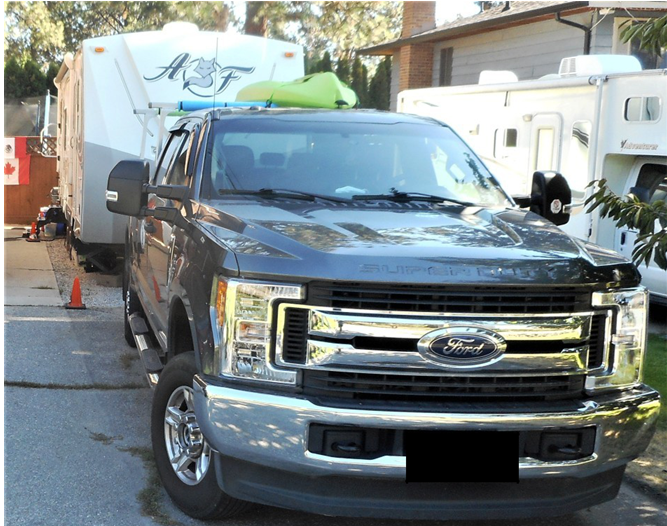

• If you are hauling an ATV, you need the registration for that or, if from a jurisdiction with no registration, the original bill of sale.
• Larger motorcycles and ATVs may require a separate permit.
• Many snowbirds cancel the 10-year permit on exit unless you plan to leave the RV in Mexico. They are extremely difficult to cancel if you sell or write off your RV outside of
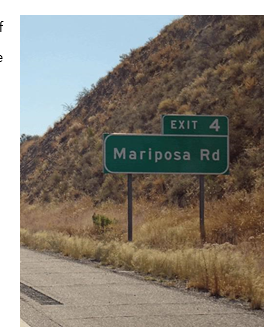 Mexico.
Mexico.
• Remember, as the 180-day permit requires a deposit of $400 USD, this is returned when the vehicle exits and the permit is cancelled.
• The 180-day permit may cost less for vehicles older than
2007. You have to have the original permit plus copies of vehicle registrations or titles.
• You will not obtain a TIP for an HDT (semi-tractor pulling a 5th wheel). It is considered a commercial vehicle.
• You may exit from a different crossing than you entered, but it must have a Banjercito office.
Resources
- Specifications of gross weight of a vehicle (PDF) – by Jillian O’Keeffe
- Pages from Vehicle-Imports-SAT22
- Pages from Manual_de_Operacion_Aduanera55_56
Any questions, email Dan info@bajaamigos.net or Paul beddows1@telus.net.
Dan and Lisa Goy, owners of Baja Amigos RV Caravan Tours, have been making Mexico their second home for more than 30 years and love to introduce Mexico to newcomers.


